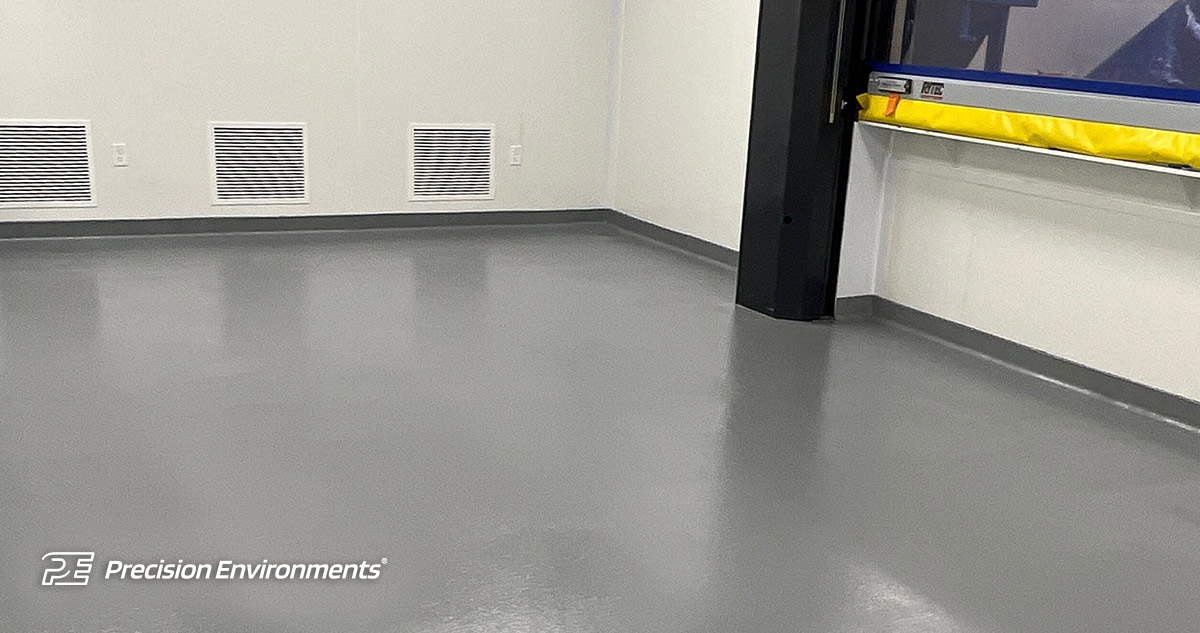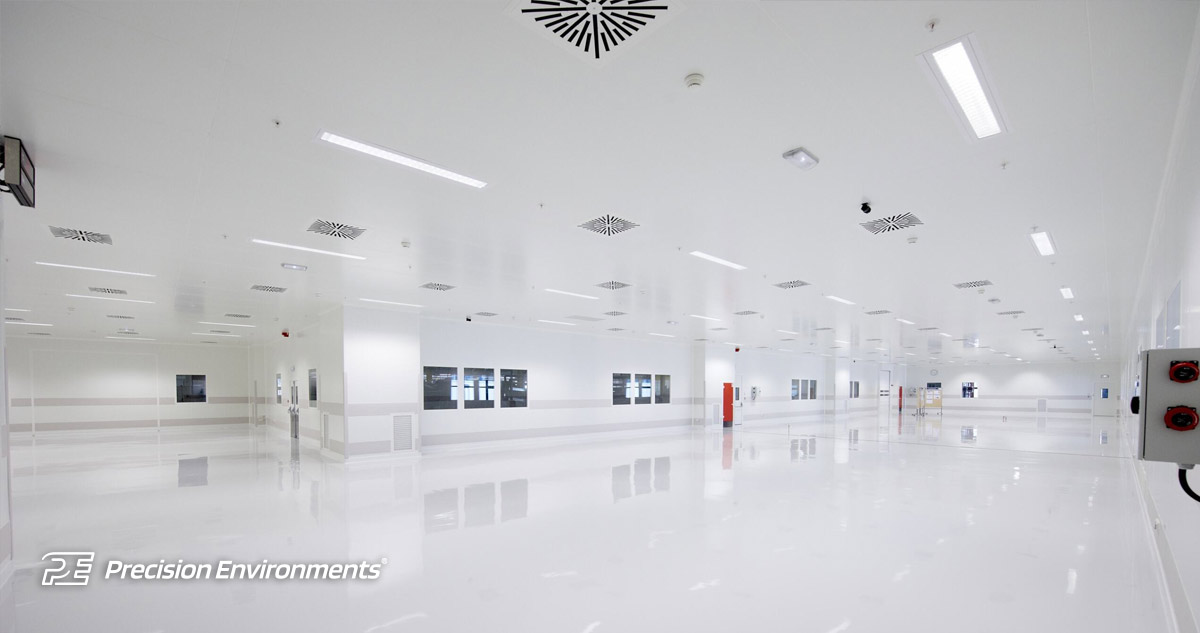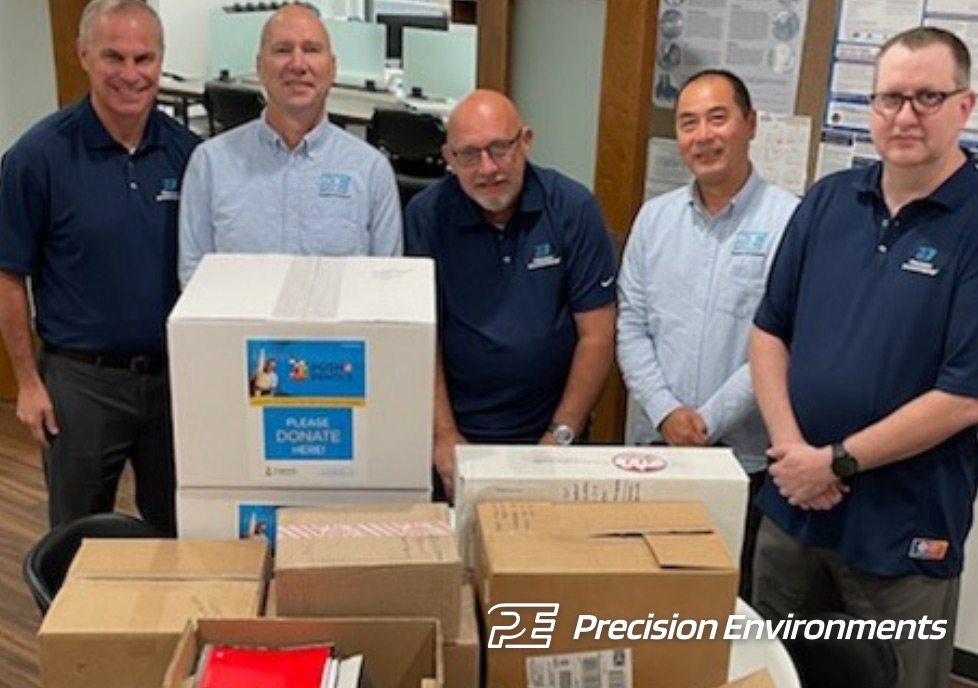Designing Cleanrooms to Mitigate Microbial Contamination
In industries like pharmaceuticals, biotechnology, and medical devices, cleanrooms are essential for maintaining the integrity of processes and products. For cleanrooms requiring the control of microorganisms, often involving sporicidal agents and other chemicals, careful design is crucial to manage contamination risks effectively.
Material Selection
Materials used in cleanrooms must resist the corrosive nature of sporicidal agents and disinfectants. Stainless steel is commonly used for surfaces and fixtures such as process equipment, tables, chairs, pass-throughs, and air/misting showers due to its durability and chemical resistance.
Epoxy or seamless vinyl coatings on floors offer chemical resistance and ease of cleaning, creating smooth, seamless surfaces that do not harbor contaminants. The installation of wall-to-floor coving also helps create easy-to-clean transitions.
Example of epoxy flooring with coving
Modular wall systems with a uPVC finish are available and perform well against common cleaning and sanitizing/disinfecting solutions. They create smooth surfaces and are chemically cold-welded to prevent seams where microorganisms might congregate. The white hygienic color provides a clean aesthetic and helps spot the buildup of residues or soils.
Dagard Wall Systems https://www.dagard.com/en/
When selecting materials and surfaces within the cleanroom, keep the following in mind for easy cleaning:
- Smooth, non-porous surfaces prevent the harboring of contaminants and allow effective disinfection.
- Rounded corners and seamless flooring reduce areas where contaminants can accumulate, making cleaning more efficient.
HVAC System Design
A well-thought-out HVAC system design is vital for maintaining cleanliness and ensuring effective environmental control of the cleanroom space. HEPA (High-Efficiency Particulate Air) or ULPA (Ultra-Low Particulate Air) filters are essential for removing airborne particles and microorganisms. Laminar airflow minimizes turbulence, preventing the spread of contaminants, while positive pressure differentials prevent contaminants from entering the cleanroom. Conversely, HVAC systems can be designed to create negative pressure areas to prevent contamination from exiting and affecting other areas of the facility.
Redundant systems and fail-safes ensure cleanroom integrity even in case of system failures. Backup HVAC systems and redundant monitoring systems provide continuous operation and monitoring in the event of a failure. Implementing redundancy could save valuable resources if the cleanroom is hosting a high-value process.
Personnel and Equipment Decontamination
Areas for decontaminating personnel and equipment are critical. Airlocks and gowning areas minimize the introduction of contaminants by providing controlled environments for changing into cleanroom attire. Pass-through chambers facilitate the transfer of materials and equipment without compromising cleanliness. Other processes, such as HEPA filtered pass-throughs, special cart transfer systems, and sporicidal wipe-downs of material, can also prevent contamination from being introduced into the cleanroom.
Monitoring and Validation
Continuous monitoring and validation are essential for maintaining cleanroom standards. Environmental monitoring involves regular air and surface sampling to detect particles and microorganisms. Validation protocols ensure that cleaning and disinfection processes are consistently effective against targeted contaminants. Environmental monitoring of your cleanroom is the report card for all the contamination control processes you have in place. Use this information to improve or spot deficiencies before they become larger problems.
Limiting Viable Contamination
Consider the workflow of activities conducted in the cleanroom space. Design the cleanroom to minimize backtracking and personnel movement, as limiting personnel movement can significantly reduce the levels of particulates found in the cleanroom.
Common microorganisms
Personnel training and strict adherence to standard operating procedures (SOPs) are vital for preventing contamination. Gowning protocols ensure that personnel do not introduce contaminants, and detailed disinfection procedures ensure consistent and effective decontamination.
In Closing…
Designing cleanrooms to mitigate microbial contamination involves careful consideration of materials, HVAC systems, surface design, workflow/process, and procedural protocols. By focusing on these key factors and implementing best practices, the risk of contamination can be significantly reduced, ensuring a controlled and compliant cleanroom environment. These design considerations are essential for maintaining the purity and safety of products and processes in high-stakes industries.
Jeff Meek
Regional Sales Manager
Recent Posts
Precision Environments, Inc.
Corporate Headquarters
4440 Lake Forest Drive Suite 120
Cincinnati, OH 45242
Phone: 513-847-1510









